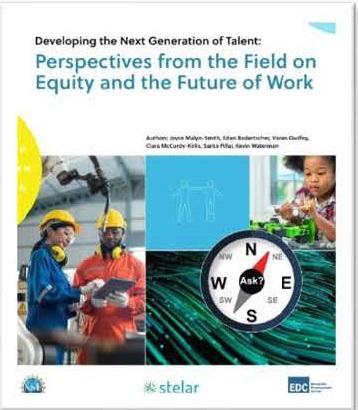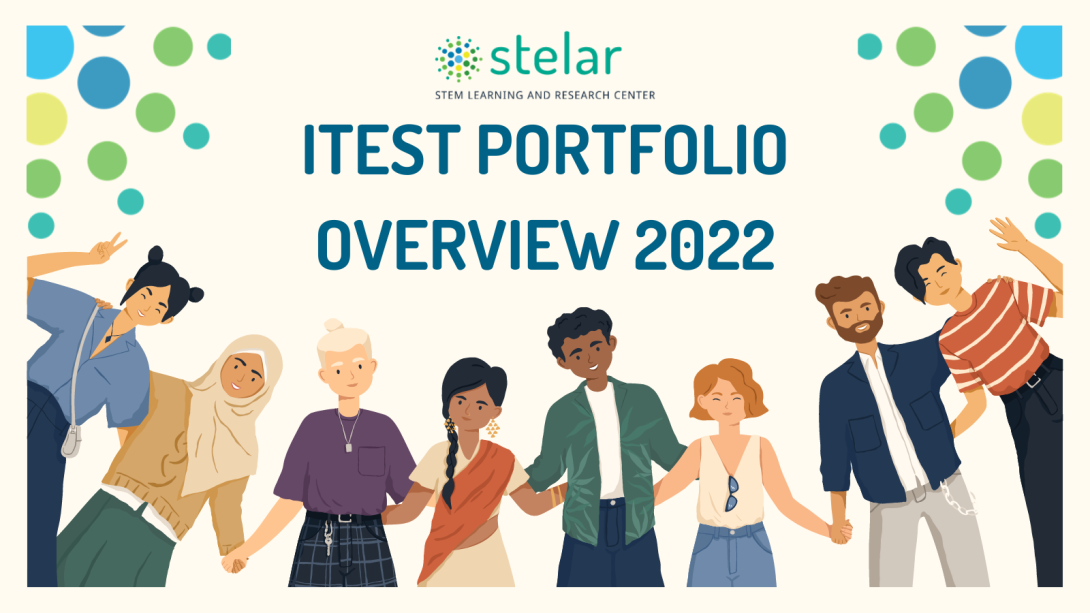Resources included in these libraries were submitted by ITEST projects or STELAR and are relevant to the work of the NSF ITEST Program. PDFs and/or URLs to the original resource are included in the resource description whenever possible. In some cases, full text publications are located behind publishers’ paywalls and a fee or membership to the third party site may be required for access. Permission for use must be requested through the publisher or author listed in each entry.
Remote professional development: Using a system modeling tool for 3D teaching and learning
PublicationModeling is key to how scientists help explain complex phenomena—from the coronavirus pandemic to climate change—and explore scientific and engineering problems. The Next Generation Science Standards (NGSS) recognize the importance of Systems and Systems Models as one of the crosscutting concepts, and Developing and Using Models and Using Computational Thinking as two of the science and engineering practices. These capabilities are important in order to understand responses to the pandemic and to solve other pressing problems like water pollution and freshwater scarcity.
Listening to waves: Engaging underrepresented students through the science of sound and music
PublicationThe survey results indicate that program participation improves students’ attitudes toward science in several ways. Students indicated that they were considerably more engaged in the science of sound activities than in a generic science activity (question A) or in their typical science classes (question E). Significantly, they were much more likely to agree or strongly agree that while the science of sound was taking place (E-post), science was one of their favorite subjects (71%), their preference for science at other times (E-pre) was much lower (42%). It is remarkable that for so many
Work-in-Progress--Design and Evaluation of Mixed Reality Programs for Cybersecurity Education
PublicationWith the shortage of cybersecurity professionals, there is a critical need to train more young-generation cybersecurity professionals to fill the gap. In this work, we designed interactive activities that make abstract cybersecurity concepts more tangible by using exciting new mixed reality (MR) technology to teach cybersecurity skills and raise the potential interest in cybersecurity careers for middle school students. We plan to analyze the immersive experience, situational interest, and workload after the experiment to study the participants' learning performance and user experience.
Making Classroom Learning Personalized
PublicationIn this policy brief, Walkington and Bernacki discuss personalized learning (PL) and argue that if schools are to achieve the impact on learning outcomes they envision, they can draw upon what is known about students’ interests, values, self-regulation, and mastery, and how to leverage them for learning. The theory of change at the center of a PL design should answer: “What learning outcome do I intend to affect? What learning activities address this aim? What would I need to know about the learner to adapt the activity?” The authors provide advice to those who wish to fund, adopt, design, and
A Technology-mediated Learning Environment
PublicationImplementing a technology-mediated learning environment is a challenge for teachers. They have to not only use the learning materials effectively (pedagogical content knowledge) but also integrate the technology that mediates the learning. It is important that prior to the implementation of technology-mediated learning content in the classroom, teachers feel confident on how to use the technology. Therefore, an effective professional development should be provided to the teachers. This paper includes details of the design and conduct of a professional development workshop on a technology
Gender stereotypes about interests start early and cause gender disparities in computer science and engineering
PublicationSocietal stereotypes depict girls as less interested than boys in computer science and engineering. We demonstrate the existence of these stereotypes among children and adolescents from first to 12th grade and their potential negative consequences for girls’ sub- sequent participation in these fields. Studies 1 and 2 (n = 2,277; one preregistered) reveal that children as young as age six (first grade) and adolescents across multiple racial/ethnic and gender intersec- tions (Black, Latinx, Asian, and White girls and boys) endorse ster- eotypes that girls are less interested than boys in
Creating a Constructivist Learning Environment to Enhance Secondary Female Students’ Engagement in STEM Activities
PublicationFemale students participate in STEM activities at a low rate compared to males. Educational researchers have called for studies which examine the factors that influence STEM participation. The purpose of this study is to examine how a unique learning structure built on the principals of constructive learning environments might impact students’ sense of belonging and encourage them to participate in more STEM activities. For this qualitative study, interviews were conducted with 12 mentor and 17 student participants. Preliminary findings indicated that a constructive learning environment
Developing the Next Generation of Talent: Perspectives from the Field on Equity and the Future of Work
Publication
This informative report extends prior reports on the Future of Work to address issues of diversity, equity, and inclusion in light of recent historical events.A key outcome of the report was the development of a new tool that educators, policy makers, innovators, and beyond can use to understand the structures in place that prevent change towards a more equitable and diverse society. The tool helps facilitate discussions that provides equal focus on both the systems that frame the problem and the people directly affected by them. If used with an open mind to the endless possibilities to invoke
Universal design of a Tier 2 fraction video game
PublicationPaper presented at the 42nd annual meeting of the North American Chapter of the International Society of the Psychology of Mathematics Education (PME-NA), Philidelphia, PAThe 2017 National Assessment of Educational Progress highlights stagnant and declining performance in mathematics, foundational to STEM and ICT, in both 4th (17% proficient) and 8th (9% proficient) grades. At the same time, promoting diversity in the workforce is paramount for U.S. innovation in STEM and ICT fields. Individuals with disabilities are underutilized members of the STEM and ICT workforce. In this poster, we
ITEST Portfolio Overview 2022
Publication
This report provides an overview of the ITEST portfolio's current projects. The information included was curated with new ITEST proposal writers in mind so that you can become more familiar with the program and current project trends. We used several data sources to compile this information; NSF's Award Search database, and project survey data collected by STELAR (the New Project Survey and Annual ITEST Survey).